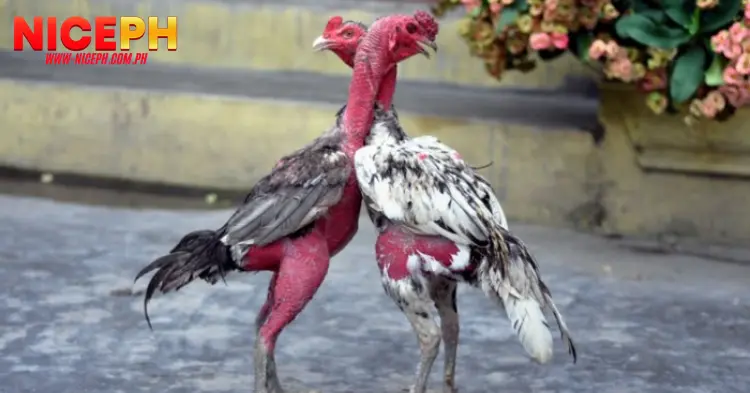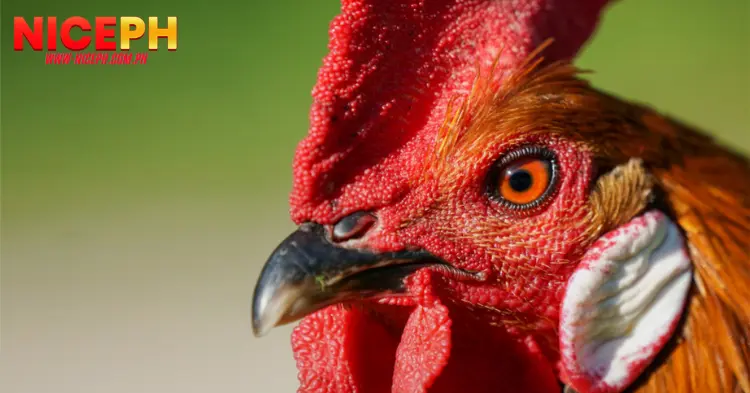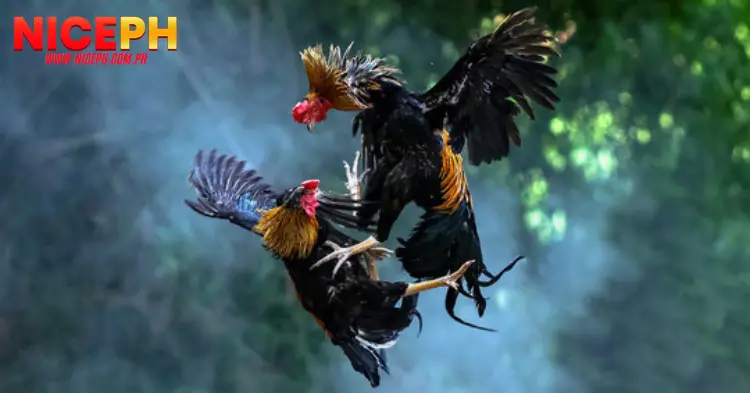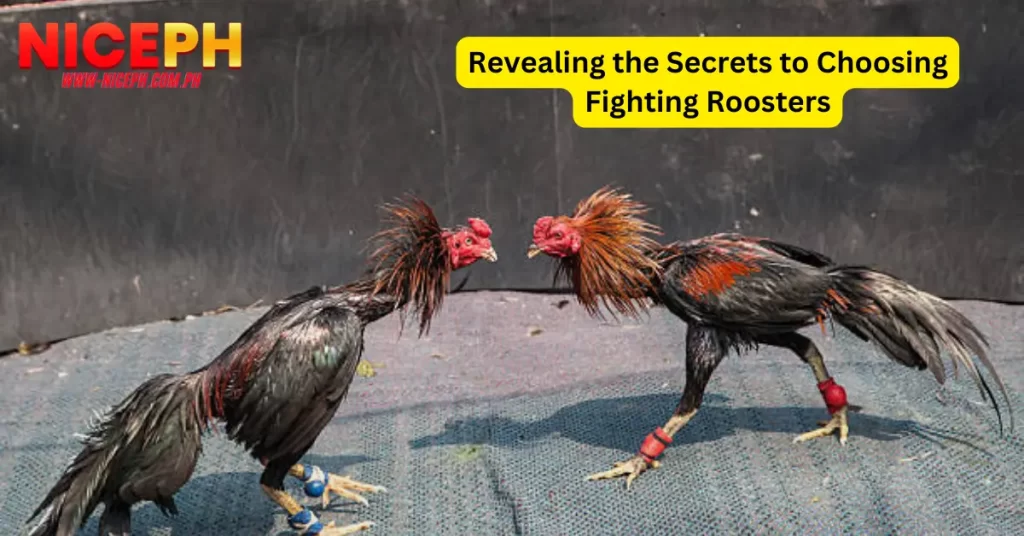Choosing fighting roosters for raising and training has become a popular choice among enthusiasts passionate about cockfighting.. Breeders aiming to acquire quality birds must thoroughly research and adopt accurate selection methods to ensure their participation in matches results in the desired victories.
Let’s explore NicePH’s guide to selecting powerful fighting roosters!
Overview of Methods for Choosing Fighting Roosters Based on Physical Characteristics
You can fully utilize the method of choosing skilled fighting roosters by observing their external appearance and physique.
Experienced breeders often evaluate the quality of fighting roosters through their five essential traits, which include:
- Large, straight beaks with wide mouths
- Pea combs on their heads
- Rectangular eyes
- Thick, long, and straight necks
- Broad backs and long wings
- Large thighs, with the thigh length exceeding the shank length
- Sleek legs and tapered toes
- Thin, dry scales on their legs
Selecting Fighting Roosters by Evaluating Their Posture
Understanding the ideal posture of a powerful bird is key when choosing fighting roosters. Identifying the physique of a potential champion requires careful observation.

Tall and robust birds with sharp facial expressions, confident gaits, and composed postures often possess exceptional combat potential and fierceness. A rooster with a droplet-shaped stance is considered the epitome of a powerful fighter. Additionally, a rooster with a sturdy body and deep keel (resembling a ship’s hull) is an ideal choice for matches. Paying attention to posture when selecting fighting roosters is essential for making precise decisions.
Evaluating the Head When Choosing Fighting Roosters
The head of a fighting rooster plays a significant role in its personality and courage. Observing the head carefully is a vital step when selecting a bird. A perfect balance between the head, neck, and body forms the foundation of an exceptional fighter.
- Wide, broad heads: Such roosters are tough but often sluggish. They can endure blows but lack agility and efficient attack capabilities.
- Narrow heads with slightly protruding eyes: Birds with these traits tend to be timid and may flee when confronted in battles.
- Square heads with rounded features and sunken faces: These roosters exhibit excellent resistance to blows and possess quick, agile striking capabilities, making them highly desirable.
Selecting Based on Beak Characteristics

The beak is one of the primary weapons of a fighting rooster. Thus, its characteristics significantly influence the bird’s combat performance. Recognizing the types of good and bad beaks allows for accurate selection.
Three types of superior beaks to consider are:
- Triangular beaks (Three-leaf beaks): Known for their strength and hardness.
- Sparrow beaks: Short but capable of delivering devastating pecks.
- Twisted beaks: These roosters excel with rapid, precise pecking, enabling them to overpower opponents quickly.
On the other hand, avoid roosters with undesirable beak traits:
- Curved beaks: Small and hooked, giving a fierce appearance but lacking combat efficiency.
- Stubby beaks: Though they look robust, such roosters are typically slow and lack pecking power.
=> Read more: Advanced Methods for Training Fighting Roosters: Techniques Used by Experts
Choosing Roosters by Tail Characteristics
The tail plays a crucial role in maintaining balance during jumps and kicks. Observing the tail’s shape is an indispensable aspect of selecting powerful fighters. A rooster with a tail shaped like a fan, slightly downward-pointing tips, ensures effective combat and stable balance in any situation.
Some desirable tail shapes include:
- Crescent-shaped tails: With feathers resembling a crescent moon, these roosters often deliver precise and deadly kicks.
- Pure white tails (Bach Linh): Roosters with entirely white tail feathers are believed to be exceptional fighters.
- Long-tailed roosters: Known for their ability to perform powerful follow-up strikes.
- Banana leaf-shaped tails: Resembling coconut leaves, these roosters excel in endurance and deliver difficult-to-counter blows.
Assessing Postures While Sleeping, Walking, and Standing
Experienced breeders often evaluate fighting roosters through their sleeping, walking, and standing postures. Some rare postures indicating exceptional fighters include:
- “Hanging snake” sleep posture: Roosters sleeping on trees with their heads hanging down.
- “Sleeping like the dead” posture: Roosters sleeping on the ground with their necks stretched and wings sprawled out as if lifeless.
- “One scoop of sand” walking style: When walking, their toes scoop sand forward before stepping.
- “Head shaking” movement: Roosters shake their heads while standing or walking, a trait observed only during rest or combat.
Additionally, superior fighters exhibit unique combat styles:

- Dodging the net: When placed under a coop, these roosters crawl low to avoid shadows, demonstrating agility and cleverness.
- High-quality fighting stances: Skilled fighters use moves such as side kicks, back attacks, or strikes targeting their opponents’ necks and jaws.
- “Running strategy” fighters: These roosters attack briefly, retreat to lure the opponent, and then counterattack with fierce precision, often blinding or incapacitating their adversaries.
=> Read more: How to Build a Sabong Training Run to Boost Gamefowl Stamina
Experience in Identifying Exceptional Roosters through Unique Traits
Identifying elite fighters often involves recognizing unique characteristics:
- Roosters with birthmarks on their tongues: Red or black spots on their tongues are considered signs of rare champions.
- “Steel feather” roosters: With stiff, coiled feathers resembling wire, usually found on their tails or wings.
- “Hidden scales”: Small scales hidden under larger ones on their legs, often associated with roosters possessing deadly strikes.
- “Three-testicle” or “One-testicle” roosters: These birds are frequently extraordinary fighters.
- Roosters with distinct crowing: Those crowing over seven distinct sounds with breaks between each tone are regarded as divine champions.
=> Are you looking for a reputable and top-quality casino for betting? Try our partners: Phjoy Casino.
Conclusion
Choosing fighting roosters requires breeders to adopt appropriate methods to ensure they obtain top-tier fighters capable of dominating in battles.. Various approaches, based on physical attributes and unique traits, provide clarity and effectiveness in the selection process.
With careful observation and precise application, breeders can confidently secure high-quality roosters and achieve outstanding results in cockfighting.

